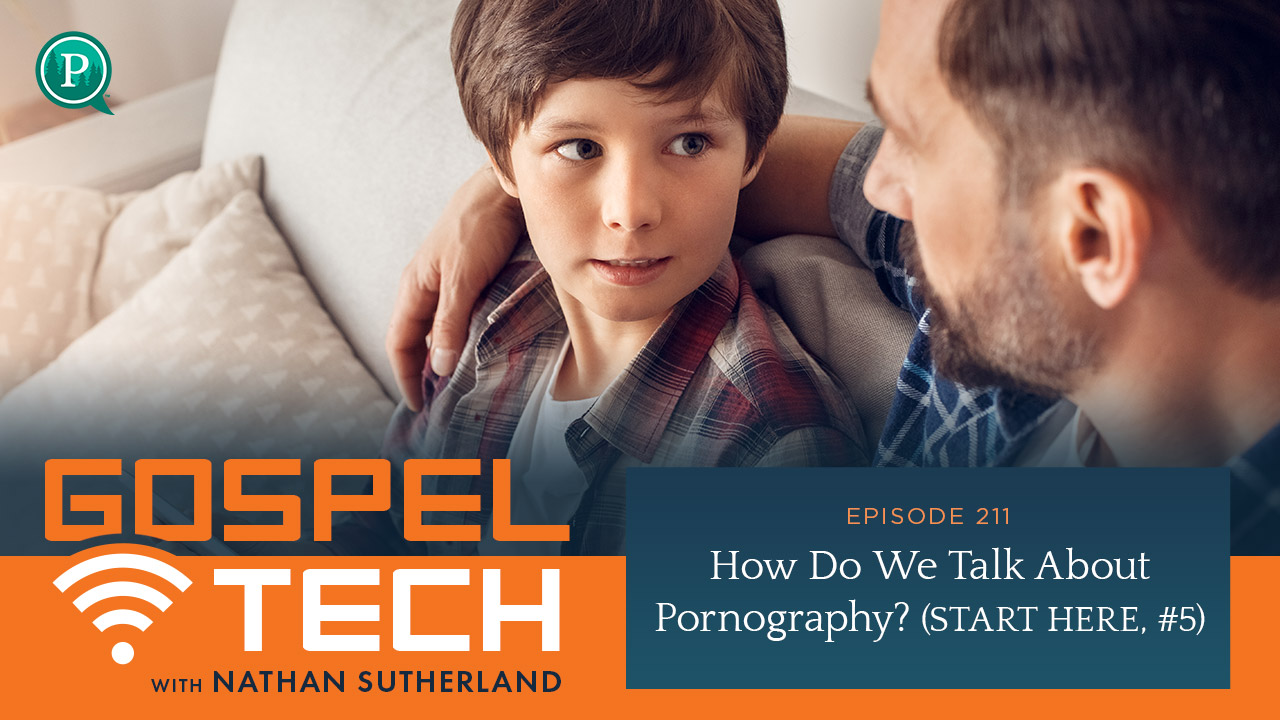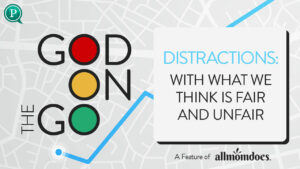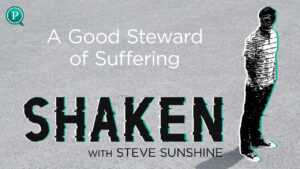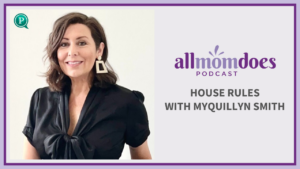*NOTE: This episode might be one to listen with ear buds in, as this topic is sensitive for young kids.
Pornography is a conversation frought with emotional, societal, and spiritual baggage. It’s something we’d like to pretend doesn’t exist, and especially something that our children will never have to deal with. The problem is, they will—and making them deal with it alone isn’t helpful. ENTER: Today’s conversation! We’re going to talk about what to know about pornography, how to address it purposely, and some resources to help make a plan that is hope-focused and lovingly direct.
Show Notes:
Fight the New Drug references lots of great studies. Check out the links for yourself: https://fightthenewdrug.org/how-porn-can-change-the-brain/
A few I reference:
Supernormal Stimuli: Barrett, Deirdre. (2010). Supernormal stimulus. New York: W.W. Norton & Company.
Hilton D. L., Jr (2013). Pornography addiction – a supranormal stimulus considered in the context of neuroplasticity. Socioaffective neuroscience & psychology, 3, 20767. https://doi.org/10.3402/snp.v3i0.20767
Voon, V., et al. (2014). Neural Correlates of Sexual Cue Reactivity in Individuals with and without Compulsive Sexual Behaviors, PLoS ONE, 9(7), e102419. doi:10.1371/journal.pone.0102419
Porn Trains the Brain:
Banca, P., Morris, L. S., Mitchell, S., Harrison, N. A., Potenza, M. N., & Voon, V. (2016). Novelty, conditioning and attentional bias to sexual rewards. Journal of psychiatric research, 72, 91–101. doi: 10.1016/j.jpsychires.2015.10.017
Kühn, S., & Gallinat, J. (2014). Brain structure and functional connectivity associated with pornography consumption. JAMA Psychiatry, 71(7), 827. doi: 10.1001/jamapsychiatry.2014.93
Albery, I. P., Lowry, J., Frings, D., Johnson, H. L., Hogan, C., & Moss, A. C. (2017). Exploring the Relationship between Sexual Compulsivity and Attentional Bias to Sex-Related Words in a Cohort of Sexually Active Individuals. European addiction research, 23(1), 1–6. https://doi.org/10.1159/000448732
And builds a demand for novelty…
“not more porn, new porn” – FTND, https://fightthenewdrug.org/how-porn-can-become-an-escalating-behavior/ -cited research: Banca, P., Morris, L. S., Mitchell, S., Harrison, N. A., Potenza, M. N., & Voon, V. (2016). Novelty, conditioning and attentional bias to sexual rewards. Journal of psychiatric research, 72, 91–101. doi: 10.1016/j.jpsychires.2015.10.017
Koukounas, E., & Over, R. (2000). Changes in the magnitude of the eyeblink startle response during habituation of sexual arousal. Behaviour Research and Therapy, 38(6), 573–584. doi: 10.1016/s0005-7967(99)00075-3
Meuwissen, I., & Over, R. (1990). Habituation and dishabituation of female sexual arousal. Behaviour Research and Therapy, 28(3), 217–226. doi: 10.1016/0005-7967(90)90004-3
“Pornography satisfies every one of the prerequisites for neuroplastic change. When pornographers boast that they are pushing the envelope…what they don’t say is that they must, because their customers are building up a tolerance to the content.” .Dr. Norman Doidge, The Brain that Changes itself (2006)
1.Three downsides of pornography:
“Anxiety, depression…” —Gary Brooks, 2013.“Anytime [a person] spends much time with the usual pornography usage cycle, it can’t help but be a depressing, demeaning, self-loathing kind of experience.” https://fightthenewdrug.org/how-porn-can-impact-mental-health-and-fuel-loneliness/ —research support:
Depression: Harper, C., & Hodgins, D. C. (2016). Examining Correlates of Problematic Internet Pornography Use Among University Students. Journal of behavioral addictions, 5(2), 179–191. https://doi.org/10.1556/2006.5.2016.022
Anxiety: Wordecha, M., Wilk, M., Kowalewska, E., Skorko, M., Łapiński, A., & Gola, M. (2018). ‘Pornographic binges’ as a key characteristic of males seeking treatment for compulsive sexual behaviors: Qualitative and quantitative 10-week-long diary assessment. Journal of behavioral addictions, 7(2), 433–444. https://doi.org/10.1556/2006.7.2018.33
Loneliness: Butler, M. H., Pereyra, S. A., Draper, T. W., Leonhardt, N. D., & Skinner, K. B. (2018). Pornography Use and Loneliness: A Bidirectional Recursive Model and Pilot Investigation. Journal of sex & marital therapy, 44(2), 127–137. https://doi.org/10.1080/0092623X.2017.1321601
Lower life satisfaction: Willoughby, B. J., Young-Petersen, B., & Leonhardt, N. D. (2018). Exploring trajectories of pornography use through adolescence and emerging adulthood.55(3), 297-309. doi:10.1080/00224499.2017.1368977
Poorer overall mental health: Koletić G. (2017). Longitudinal associations between the use of sexually explicit material and adolescents’ attitudes and behaviors: A narrative review of studies. Journal of adolescence, 57, 119–133. https://doi.org/10.1016/j.adolescence.2017.04.006
2. Dangerous Sexual Behaviors
Wright, P. J., Tokunaga, R. S., & Kraus, A. (2016). A meta-analysis of pornography consumption and actual acts of sexual aggression in general population studies. Journal of Communication, 66(1), 183-205. doi:https://doi.org/10.1111/jcom.12201
Pornography Use, Two Forms of Dehumanization, and Sexual Aggression: Attitudes vs. Behaviors. Yanyan Zhou, Tuo Liu, (Harry) Yaojun Yan & Bryant Paul, 2021 “Evidence suggests men’s pornography use is positively associated with both forms, but mechanistic dehumanization of women is more associated with aggressive attitudes while animalistic dehumanization is more associated with aggressive behaviors.” https://www.tandfonline.com/doi/full/10.1080/0092623X.2021.1923598?src=recsys
3. Interpersonal Relationship Problems
For this one, just read this article: https://fightthenewdrug.org/how-porn-can-negatively-impact-love-and-intimacy/ But to list a few: -commit more infidelity: Maddox, A. M., Rhoades, G. K., & Markman, H. J. (2011). Viewing sexually-explicit materials alone or together: associations with relationship quality. Archives of sexual behavior, 40(2), 441–448. https://doi.org/10.1007/s10508-009-9585-4 -less committed to their partners: Minarcik, J., Wetterneck, C. T., & Short, M. B. (2016). The Effects Of Sexually Explicit Material Use On Romantic Relationship Dynamics. Journal Of Behavioral Addictions, 5(4) 700-707. Doi: 10.1556/2006.5.2016.078 & Lambert, N. M., Negash, S., Stillman, T. F., Olmstead, S. B., & Fincham, F. D. (2012). A love that doesn’t last: Pornography consumption and weakened commitment to one’s romantic partner. Journal of Social and Clinical Psychology, 31(4), 410-438. doi:10.1521/jscp.2012.31.4.410
Are less satisfied in their relationships: Wright, P. J., Tokunaga, R. S., Kraus, A., & Klann, E. (2017). Pornography consumption and satisfaction: A meta-analysis. Human Communication Research, 43(3), 315-343. doi:https://doi.org/10.1111/hcre.12108
Have less trust: Carroll, J. S., Busby, D. M., Willoughby, B. J., & Brown, C. C. (2017). The porn gap: Differences in men’s and women’s pornography patterns in couple relationships.16(2), 146-163. doi:10.1080/15332691.2016.1238796
While these issues can exist without porn, porn doesn’t seem to help: Rasmussen, K. (2016). A historical and empirical review of pornography and romantic relationships: Implications for family researchers. Journal of Family Theory & Review, 8(2), 173-191. doi:https://doi.org/10.1111/jftr.12141
In fact, porn can negatively impact whether a couple stays together: Perry, S. L. (2018). Pornography use and marital separation: Evidence from two-wave panel data. Archives of Sexual Behavior, 47(6), 1869-1880. doi:10.1007/s10508-017-1080-8 & Perry, S. L., & Davis, J. T. (2017). Are pornography users more likely to experience a romantic breakup? Evidence from longitudinal data. Sexuality & Culture, 21(4), 1157-1176. doi:10.1007/s12119-017-9444-8 & Perry, S. L., & Schleifer, C. (2018). Till porn do us part? A longitudinal examination of pornography use and divorce. 55(3), 284-296. doi:10.1080/00224499.2017.1317709
Ways to listen:
🔗 click the link in the profile
🎧 search Gospel Tech in your favorite streaming service (iTunes, Amazon)
Transcription:
Hello, everybody and welcome to the Gospel Tech podcast. My name is Nathan Sutherland and this podcast is dedicated to helping families love God and use tech. Today we are continuing our conversation with the START HERE series by talking about pornography. The START HERE series is intended to be little snapshots, little nutshell conversations, if I were to mix my metaphors, that will help you address a specific Gospel Tech conversation that might apply to your family in this season. You can share them with your friends if you work in a church or a school. This is where you could return for those refreshers and reminders without having to go through all 200 plus episodes or whatever the entire year of this year’s content.
So with that in mind, we’re going to talk about pornography, how we can address it and talk about it, what we need to know, and then third, how we can actually apply that information practically. And the hope is this is encouraging to you, it’s something you can be used to be equipped to have these hard conversations with your kiddos, and that you can share with others who are doing the same. So with no further ado, let’s dive in.
Well, how do we talk about pornography? We need to know what we’re talking about. We have to be informed. So first things first we need to know about pornography. Is that it is what researchers would call a super normal stimuli. Most of the references, by the way, I’ve gotten are from the Fight the New Drug website. And the reason for that is twofold. One, there’s hundreds of thousands of research studies done on pornography, going back, I mean, to the ’60s and ’70s. So there can be a lot.
I use Fight the New Drug as the filtering mechanism and then in their articles you can find their research and go look at that research yourself. So when I reference a study, just assume that I actually found it originally through Fight the New Drug. Even though I’ve read the study myself now, I still want to shout out Fight the New Drug for doing all the work to compile really excellent research, that you can then go and read the research for yourself and do it in sequence and see how it starts to paint the picture of what pornography is doing to society, families, and our brains.
With that in mind, supernormal stimuli is referenced out of Barrett Deirdre in 2010 and the reference is an older reference, but the idea is this. You can be trained to get used to something that is unnatural. And not only are you used to it now, but is preferential. So the example that’s referenced is cardboard butterflies. There were some researchers, they took some male and female butterflies. Put them in an environment, and then the researchers painted cardboard butterflies. They painted them as females and they accentuated the parts of the female butterflies that the males find most interesting, put them in with the male and the female butterflies, and the males flocked to said cardboard butterflies. Problem being, guaranteeing their extinction at this point. That community is now officially dead because they’re not going to mate. They’re specifically stuck on these cardboard butterflies.
That you can see the corollary where we are. But let’s make it very clear. So this is from Vin et al 2014, super normal stimuli, and specifically in this case, pornography can take our brain’s natural stimuli, our desire for intimacy and connection and give us more quantity, more exaggerated and more super normal versions of that thing until it can override what we think is normal, warp what we perceive as exciting and make real intimacy seem less interesting by comparison. That’s what we’re talking about. Pornography is a super normal stimuli and if we were to put this in other words, we would say the porn trains the brain for unnatural stimuli. That it needs something that doesn’t exist in nature and that becomes the preference. You can actually train your brain to need it. And there’s a couple factors in there. We won’t go huge into it, but basically the idea is your brain is already wired for being attracted to somebody else and in nature we see animals attracted to novelty anyway.
The problem with pornography is it’s so much faster than real life. For monkeys, they would need a second female to enter the room. All you need is a second browser. And that is really important because it ends up training a behavior that doesn’t exist in real life. You can’t match the frequency, you can’t match the intensity, you can’t match the diversity. It is a super normal stimuli. It’s a cardboard butterfly. Not only that, the individuals you’re watching have been filtered and augmented and surgically adapted to not reflect what an actual human looks like. This is actually stated, I love it by Billy Eilish in Howard Stern interview if you give me license to reference this.
But Billie Eilish is a famous singer and she’s going on about how she hates pornography both because of how it depicts women and how it’s impacted her life. Some relational abuse that she suffered because she thought that this was normal, which is not, by the way, uncommon for young people to witness pornography and just assume, well, this is sex. This is what happens in relationships, and that’s also part of our danger when it comes to super normal stimuli. But she makes that point of these people aren’t regular people. We don’t come looking like this. This is augmented either digitally or physically, and that is important for us to recognize when we are forming an appetite through repetition. We know this because of the heavy in theory of learning, this idea that neurons of fire together wire together and neuroplasticity that when we receive and we reward a stimuli multiple times and there’s nothing more rewarding for the human brain than sex outside of drugs. But for a natural behavior, your body is wrapped around this behavior and rewards you heavily for participating.
So now you’re ingesting, now you’re rewarding, and now you’re forming a behavior. So I spend all this time to tell you, by the way, the supernatural stimuli, I can include this in the notes, but Kun Gallena 2014 Bunker, Morris, Mitchell et al 2016, Albury, Lowry, Frin 2017. These are all research studies that support porn trains the brain for a unnatural stimuli. That’s important because that building demands novelty. It’s not more pornography as Fight the New Drug says, it new pornography, and this would be Cucanus and over 2000 and wow, Mu Weisen and over 1990. This idea that it’s not more, it’s not a quantity thing. It’s like, oh, I need a longer version of the same content I’ve been consuming like, no, you need new. And one of the studies done, actually both of these studies done, males and females, the researchers showed an image or showed actually in this case a scene from pornography and then they showed it repeatedly and they watched the engagement levels lower and the viewers and then they without warning switched to a new scene.
So still same content, but now it’s a new input. And engagement went right back up to where it was at the beginning, meaning you expire an interest in the one because this is built around selfish consumption and novelty and now we have to pivot to another. And now all of a sudden I’m reengaged. That’s important because now you’re training your brain to need the new. Yes it works, but it only works out once. That’s not new anymore. Now you got to find something else. And this is what we are finding as Dr. Norman Doidge, The Brain That Changes Itself, fantastic book about neuroplasticity. But he has a section on pornography and he says this, “Pornography satisfies every one of the prerequisites for neuroplastic change.” Meaning it satisfies if you wanted to adapt a brain through behavioral reward systems to getting a new behavior to form and become permanent, and adapt to needing that behavior. Pornography’s got it.
He continues. “When pornographers boast that they’re pushing the envelope, making new content, what they don’t say is that they must, because their customers are building up tolerance to that content.” And this again is from Brain That Changes Itself. A book he wrote in 2000 oh, six or seven. Sorry, I’ll say six confidently, but Norman Doidge is the doctor who wrote the book and what we are studying for this first piece, what do we need to know about pornography is it is a super normal stimuli that changes the way the brain works until you demand the novelty and the uniqueness of something that is unnatural. It doesn’t exist in the world that we live in. It only exists through this screen.
That is important because the research we have on pornography shows it causes anxiety, depression, and a reduced sense of wellbeing. That’s Wodeka Wilked all 2018, Harper Hodgins 2016 and Colletic 2017. It increases the likelihood of dangerous sexual behaviors, Wright Tokanaga et al 2016, Zao and Lou in 2021, and it increases interpersonal relational problems. Rhodes Markman 2011, Wright Tokanaga again 2017 and Perry 2018. That’s a lot of research. That was a tip of the iceberg. Fight the New Drug, again, compiles a lot of this. If you want to be like, “Hey, I’m not sure that matches with reality,” please enter their research into the internets and go find abstracts, go to PubMed, get yourself a short-term subscription to some of these medical journals and read them. It is powerful, interesting stuff. And I would say there are absolutely researchers out there who are like, “No, this is getting it all wrong. Here’s why it’s wrong.” Read those two. You’re going to generally find what they’re arguing is, porn isn’t the worst thing you could do, which okay. All right.
If we’re looking for worst case scenarios, but I don’t believe many of us are, we’re looking for best case, having we be the most consistent, loving, caring, satisfying, relationally, sexually and healthful interpersonally, including raising kids. We are going to find much more research on the side of pornography does not help that. In fact, porn causes anxiety, depression, reduced sense of wellbeing, dangerous sexual behaviors. Again, especially young people who view it begin to think, well, this is sex, this is normal. And then interpersonal and relational problems. That one, a lot of that research relates to dating, marriage and fidelity basically. Going back to the early 2000s, some of that research.
So that’s the first stuff we need to know is that pornography is not simply religious people or church people or Christians saying, “Oh, that’s bad and we should shame it.” In fact, that’s not what I’m trying to do here. And if you feel shame from what I just shared, please hear me. I’m not blaming you for anything that has happened to you or that you have participated in on purpose or otherwise. I am saying that pornography as a creation is not good. Now, yes, God’s design for us is one man, one woman, and only sexually related in marriage because it’s a metaphor. Marriage will go away at some point because well, it’s supposed to show two becoming one and what that looks like, it’s supposed to show constant serving and loving for one another just like Jesus Christ loves God the Father so much that He comes down and He says, “I only do what my father does.” And when he goes to die, He says, “Now the time has come, Father glorify your name.” And God the Father speaks from heaven and says, “I’ve glorified it and I’ll glorify it again.”
The idea that Jesus was doing this because He loves the Father. And then He says, “When I am raised again, the Father will put all things under my feet.” That the Father loves the son and He’s going to give it to Him. Well, marriage is this little itty bitty picture of how can I submit and love and serve this other? How can I try to outdo the other one constantly in loving and service and kindness and hope and joy that when we die and rise again, well, we’re not married to that person anymore. Jesus makes this very clear. There’s no marriage in heaven, there’s no babies. Instead, we’re going to be like the angels. We don’t exactly know all that entails. But that this is a metaphor that we become then the bride of Christ. Don’t get it weird and twisted, just hear it for what it is. That marriage is a metaphor for what the church all Christians become for eternity in this loving relationship with Jesus Christ, their savior. And that sex is then a part of that explanation.
It’s a way to serve and to love and to be intimate. And two becoming one that is part of a greater mystery that we don’t really get. We don’t understand the trinity. We understand it as an idea, but we can’t explain how are three persons one. Well, we’re told that marital sex is part of that. And that to do it outside of that is also a sin against our bodies. Paul makes this clear. So I go on that whole piece to say sex is good, pornography is not because it’s a distortion of something good. That’s why we’re calling it out. Science agrees with that. Pornography is not beneficial. It’s societal issues and personal issues and mental health issues that come from it are not beneficial. So that’s first.
Then we need to go to, all right, but how are kids getting to it? Smartphones. Sam Black is the VP of research and Recovery at Covenant Eyes and he said smartphones is the number one way they’re seeing teens engage pornography. We need to know that when we talk about porn. Fight the New Drug notes that porn gets more monthly searches than Twitter, Instagram, Netflix, Pinterest and LinkedIn combined. So we need to know this is frequent. It’s happening. The volume is massive for the amount of traffic pornography is drawing. And if you want to go back to episode 191 and 182, those are two Sam Black conversations. Go check those out. They’re good. Sam is on point. The second one is more talking specifically kids. The first one, 182 is more about how do we talk about pornography? And big picture 191 is more, how do I address this with my children?
But now we know that pornography on its face is not good. Yes, biblically it’s not good. But as a society we have a problem and it’s not helping the way we view one another and it’s not helping relationships, it’s not helping children. So what do we do? Well, first we need a definition. I like this from Good Pictures Bad Pictures. Pornography means pictures, videos, or even cartoons of people with little or no clothes on, that focus on the private parts of the body we keep covered with a swimsuit. This is simple language. Good Picture Bad Picture is a book you can get on Amazon. There’s one. So the Good Picture Bad Picture is the six to 10. Good Picture Bad Picture junior would be appropriate down to four and five year olds. We’ve read it with all of our kids. We have four, eight, and 10. We read it repeatedly. It doesn’t use the word pornography all the time.
It talks big picture. If there’s images that make you feel uncomfortable. If there’s things that show parts of our bodies that we keep covered. If there’s people being unkind, like you tell me, gives us words, we’ll talk about that here in a minute. And that’s valuable tool. So start to introduce our children to this. They unfortunately do need to know that this is real, that it exists and that there are times where pictures can be unkind and you want to ask about that. So we have to have a definition for porn. But keep in mind it’s not just the Good Picture Bad Picture definition. We have a biblical definition for pornography and it actually is a bigger scope than just whether people have clothes on or not. Jesus says, “But I say to you, that everyone who looks at a woman with lustful intent has already committed adultery with her and his heart.” And it’s very important. This is Matthew 5:28-30.
It’s very important that we recognize Jesus didn’t say, “And everyone who sees someone naked.” He doesn’t say anything about culturally appropriate clothing. Keep in mind modesty is also in the Bible. So we want to keep that as an important part of the conversation. But that’s not this point. Jesus says it’s an act of your heart. If you look at an image, if you look at an individual and say, “I’m going to take that person’s likeness and use it for my gratification, I’m going to lust. That’s the intent to feel sexual desire unilaterally. There’s no intimacy, there’s no relationship, there’s no covenant. This is not a metaphor for how God treats us. This is just, I want to feel good now on my terms and I will, then that’s sin,” Jesus says.
He actually goes so far as to say, “If your right eye causes you to sin, cut it out.” That sins going to bring death. And if you just leave it there and keep it secret, if you keep your little pet sin and go, well, it’s not that bad. It’s not really hurt anyone. I haven’t seen my wife, hasn’t said anything. Whatever the argument might be, Jesus saying, “That is sickness. It is going to bring death to all of you. Cut it off and gouge it out.” So that’s what comes after He says this. In this piece, keep in mind who he’s talking to, he’s talking to a culture that is closer to Taliban controlled Afghanistan than it is to modern day America. Women wore full body coverings at this point. Their hair was to remain covered. That was a sign of respect. It wasn’t inappropriate to see a woman’s hair, but it was considered intimate. It wasn’t something they did in public. They kept their hair covered.
And there’s parts of wedding ceremonies where women would uncover their hair for their husbands and it was seen as a sign of their beauty and their strength and it was nice, it was good. But we’re not seeing any amount of skin where we could be like, “Well, that was just inappropriate clothing.” That wasn’t a thing in the Middle East in this time. There was no such thing as inappropriate clothing by our standards. Anyway, that’s tangents. The people we would consider like, oh, they’d be wearing inappropriate things, still involved ropes. So looking with lustful intent points out that it comes from us. Pornography has to do with our hearts, which means that picture may not have naked people. And maybe it’s a halftime show, maybe it’s a catalog, maybe it’s a website, maybe it’s whatever.
But if you’re using it for selfish gratification outside of a committed covenant, marital relationship, then that’s lust and that’s sin. And whatever’s bringing that sin just became expendable. It needs to go away. So maybe it’s get rid of your smartphone. Maybe it’s get rid of a personal computer. Maybe it’s get rid of access to whatever that device is that’s not accountable and within the hedge of your family’s tech, make sure that that’s part of the conversation. We are addressing the heart behind this, what’s going on inside us. That’s also important. Anna and I went back to our kids like, hey, our two older, “Hey, we’ve talked. You’re a couple of months into school now. We talked about pornography. Has anyone shown you or have you’ve seen? Has anyone talked about those pictures of people being unkind with their bodies?” And Owen said, “No.” Henry goes, “Yeah.” I’m like, “Oh, what do you mean?” He’s like, “Well, I saw it in a magazine.” Okay. “Where’d you see the magazine?”
By the way, if this happens parents, do your best to be cool. Be just interesting. Don’t do like you’ve just entered interrogation mode and they’ll sense the danger rising. All I can sense is the intensity, and I don’t want to talk about this anymore. We asked for a follow-up. He’s like, “All right, this magazine’s in our house.” I’m like, “Cool. Could you show that to us?” He ran out of the room, brought back a 1984, I think, National Geographic. And we’re like, “Okay, well what is it?” And he flipped right to this page and sure enough, there’s some people dancing around without clothes on, and we’re like, all right. We get it. These people are not lusting. This is not the point. That’s literally how they dress and that’s their life. And it’s unfortunate. This is probably your first experience witnessing this situation as these people not wearing clothes, but great, thank you for telling us. That’s so good.
Also, Anna and I, as we walked out of the room noted, keep in mind, knew where the picture was and knew where the magazine was. It hadn’t left memory of this was a notable moment. But was willing to tell us and that’s awesome and that’s part of the conversation. Yes, I disposed off said magazine and we can now move forward. But we now have that relational piece of like, yeah, that’s roughly what we’re talking about, these people… This isn’t lust. Let’s put some boundaries around it. Seeing a naked person doesn’t mean I’ve sinned. But we can watch our hearts and the fact that that stuck so firmly in your brain tells me, all right, there’s something going on there, and I want to continue this conversation and come back. And parents, that’s what we can do. Do it as the 1000 Hours Outside team says, “You do it in a thousand little drops.” Little drop conversations of like, we’re just going to keep talking about this.
Speaking of talking about it @birds__bees, mom, grandma combo I guess is what you’d call it, but a mom daughter combo. They would say, “Be medical, be matter of fact, and move on.” So you’re going to say the body parts. I’m going to say them right now just so that you had to hear them out loud. And I say that just so you could pause it if you need, young ears and you don’t want them to hear from me. But you have to say penis and you have to say vagina. You have to say those words. People cringe when I say that from the pulpit sometimes. I’m upfront on the stage speaking at a church. But that needs to happen. The reason that’s important is twofold. One, for their own sense of clarity and communication. That they can state the body parts. That’s really good. There’s no shame with it. It’s like the Adam and Eve thing. They don’t know that people feel shame about these body parts. It’s just what there is. And that’s great. That’s the proper form of sex education.
By the way, by saying penis and vagina, you’re not going to send your child on a bender. You’re answering their questions. That’s the reason you’re here. So they don’t have to go Google it because the questions have been answered. The second part of that is Sam Black from Covenant Eyes argued the same. He says, “You’re not going to ruin your child by mentioning these words near them. These words are not bad. They’re facts. This is what boys and girls have for genitalia. And that’s important.” Biologically, that’s important. We’re humans. This is how we reproduce, and these are the body parts that let us do that. So that’s important. And then on the second piece, and this is heavier, but I do want to make sure it’s been said. Our church did a training with a great group called GRACE. It’s the Gospel Response to Abuse and the Church Environment, is what the acronym stands for.
And GRACE training, they basically say if it comes to prosecution and someone needs to be brought before the court of law because of abuse in a church environment, that one who was abused in this case, a child has to be able to say the words. And if they can’t, if all they know is euphemistic little language, it can get caught up in lawyer speak and never actually bring charges to bear on that individual. So that’s horrific. But what we’re doing is protecting our children so they can tell us quickly, if something goes awry and protecting our children so that bad people can get… Let’s not even go bad people, so that abusers can get the consequences that are going to be most helpful. Those abusers need professional care, support and supervision. And that’s knowing the words is going to help. So be medical. Talk it out.
Greta Eskridge at Ma and Pa Modern says it this way, “Just like we don’t show strangers our private parts, we don’t want to see other people’s private parts.” So if you ever see pictures or movies on a computer or a phone, or if someone shows them to us, we look away. We go and tell a safe grownup what we saw. Know that you won’t be in trouble. And I love this last part of it. Moms and dads who listen to this, grandmas and grandpas, our children coming to us saying, I saw pornography, is not awesome. Especially since some of them are going to come and say, “I saw it on purpose repeatedly.” That’s not great. We don’t want to hear that. That’s not the desire of our heart.
But also know the fact that they’re bringing this to us is huge. This means that a child who was running the path towards death, as Jesus says, you need to cut this off and gouge it out, has turned and come home. That prodigal child who was dealing with the shame and the guilt and the struggle all on their own, is now bringing to you this thing that is really heavy. And as Chris McKenna with Protect Young Eyes says, “Celebrate like they got straight A’s.” Go nuts, because your child who was lost is now found. Your child who is running in disobedience has returned. And that is absolutely something we want to address deliberately and intentionally and lovingly. So take them out to dinner, take them out to dessert, celebrate, praise them, hug them, and then make the hard choices. Some things are going to get cut off and gouged out. Some new hedges are going to go up.
Some special forms of accountability and some independence it’s going to be lost because well, your child has shown that they’re not yet trustworthy in some area of tech use or some area of independence. So you’re going to support them in that for this season. Whatever that looks like for your family, if it’s an adult child who’s come to you and asked for help, that might look different than if it’s a teenage child still living in your home. But just know, we now know how to talk about pornography or we know the information about pornography. What it is, that it exists, that it’s really bad. And how to define it biblically, culturally. We talked about good picture, bad picture. And then some of the words we can use about this. It is bad. You can tell me. I’m not going to get you in trouble. It doesn’t mean there’s no consequences. It means I’m not going to be mad at you. I’m going to take direct action and anger against this thing that’s harming you. And that’s a loving thing to do.
So you can be angry at it. We should in fact. We probably should be more angry than we are because we’re like, it’s everywhere. That’s not loving. I have to pray against that indifference myself because I hear it so much and at some point we’re like, man, I’m just tired. The Lord encourages to not tire in doing what is good, which brings us to part three. We’re going to make a plan. With your family, you need to teach them to run, to tell and to remember. This is the Good Picture Bad Picture model that they’ll teach you in the book. Please read that book. It’s incredible. But the idea is you’re going to say no and go. So no. If you see an image pop up on a phone, if someone shows it to you on the bus, if you see it in the hallway, if it pops up when you search something on the computer, you physically turn yourself away. Run like Joseph, and get out a dodge.
Get out of that physical space. Even if you’re curious, even if you’re interested, even if you’re excited, no and go. And then you’re going to tell a caring adult. They need to know who it is. Mom or dad, grandma or grandpa, aunt or uncle when I was, they have to tell you the location, in my room, in your office, on my phone, on the bus, in the locker room, in the classroom, in the cafeteria. By the way, these are all spaces that I know of families, children have bumped into pornography. I was in this location I saw and then insert the blank. I saw something that made me uncomfortable. I saw pornography. I saw, whatever the phrase is that you guys have agreed on. And then that reminder of the reason you’re coming to me child to tell me this, the reason I want you to come is, this mistake, this bad stuff and bad like on a literal level. It’s not good for relationships and brains and our hearts.
This stuff doesn’t define you. It describes you now. This is going to be part of your journey and your new journey starts here, but you’re defined by identity in Christ. Looking at that and finding satisfaction in that is a lie now. You’re no longer a child of wrath deserving punishment as Ephesians 2:3 tells us. You’re not that. You’re a child of God and seeking satisfaction in that will never bring it. And it’s a lie about who actually defines you. So come to me and be reminded that you are beautiful and that you are loved and that you are new. And that this thing, sure, we need to address it, but it doesn’t shake my love for you and it doesn’t shake God’s love for you and it doesn’t shake your identity and purpose. So that’s some of what we want to cover on this.
Three things, again, know the research and the information. Go to Fight New Drug or check out the show notes and there’s some research in there. Then know how to define pornography. Yes, the bigger picture of people being unkind, no clothes over swimsuit areas. But also the heart issue, that this is about loving God with all our heart, soul minded strength, which means we’re not going to lust. We’re not going to take people made in the image of God and use them for our selfish gratification. And we’re going to make a plan for that. Yes, build hedges around your technology, your devices, your network, your family, and make sure that you’re talking out the game plan. When you see pornography, because I gave you a smartphone or whatever, bring it to me. I care about you and I love you. And doing so increases my trust in you, because otherwise when I find out, I’m going to go, “Hey, what’s going on here? And we’re going to have another hard conversation that might go a different direction. So please tell me first.”
There are other resources. Go back to the canopy, go back to the hedge conversation about how do we build a hedge around our family. Specifically, you can go to the gospeltechworkshop.com. That’s where you can learn how to build tech hedge around conversations about content and priorities and safety. Check that out. And then, yeah, if you have any questions on this, you can write me Nathan at gospeltech.net or if they’re just unrelated to this, you can just go questions at gospeltech.net. That’s how I accrue future questions for future topics. And then to review a couple other great resources @birds__bees talking about pornography and @maandpamodern. Those are two great pairs who do wonderful work, equipping parents in pornography. For research, Fight the New Drug. And if you want a book, The Brain That Changes Itself by Norman Doidge is solid. A very good read. If you have any others, reach out to us… Oh, we’re also on social media @lovegodusetech. And would you share this resource with others and join us next week as we continue this conversation about how we can love God and use tech.







